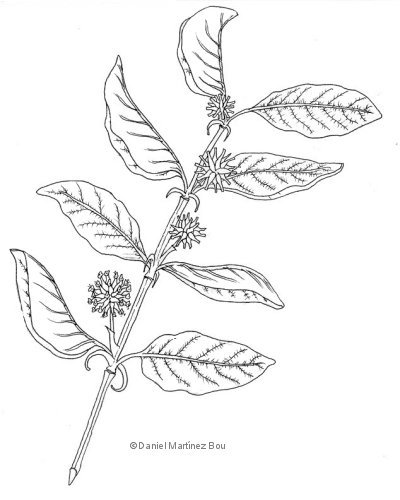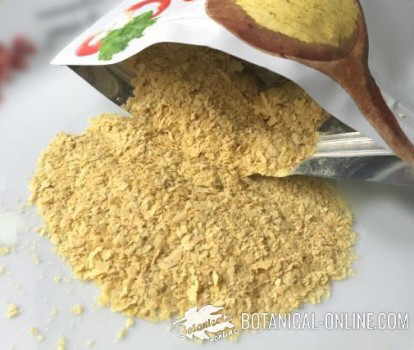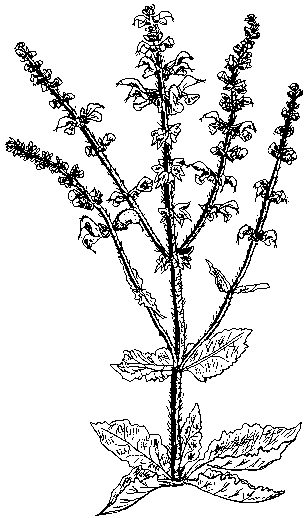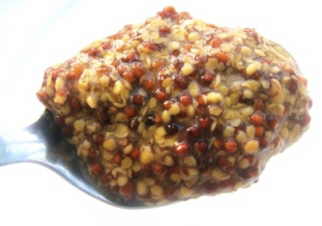Contents [show]
CHARACTERISTICS OF CATS CLAW
Common English name: Cat’s claw, cats claw, vilcacora
Common name in other languages:
– Spanish / Español: Uña de gato, chocó, damento, garabato, bejuco de gato, paz y justicia
– Catalan / Català: Uncaria tomentosa, ungla de gat
– Galician / Galego: Unha-de-gato
– Portuguese / Português: Unha-de-gato
– Italian / Italiano: Unghia di gatto
– French / Français: Liane du Pérou, griffe de cha
– German / Deutsch:Katzenkralle
– Polish/ Polski: Czepota puszysta
– Русский / Russian: Ункария опушённая
Scientific name:, Uncaria guianensis (Aubl.) Gmel.
Habitat:
Family: Rubiaceae, as coffee and noni plant
Description of cat’s claw
 Illustration of cat’s claw (Uncaria tomentosa). Courtesy of ©Dibujosparapintar.com
Illustration of cat’s claw (Uncaria tomentosa). Courtesy of ©Dibujosparapintar.com
Perennial tropical vine of the Rubiaceae family that can reach up to 30 m.
Woody stems with curved spines in the form of nails (hence the name of the plant).
Leaves ovated up to 17 cm in length, petiolated, with white hairiness underside.
Yellowish white flowers, gathered in axillary clusters up to 2 cm in length.
Components of cat’s claw
- Acids: chlorogenic, oleanolic, ursolic (plant), quinovic (bark)
- Epicatechins
- Betasitosterol
- Rutin
- Alkaloids: hirsutein, hirsutin (leaves) pteropodine (bark and root), rhynchophylline, isorhynchophylline, (leaves and root), mithraphylline, speciophylline (bark) isopteropodine, isomitraphylline (root) uncarine (plant)
MEDICINAL PROPERTIES OF CAT’S CLAW
Traditional use of cat’s claw
Traditionally this plant has been widely used, especially by the Peruvian Ashaninca tribe, in the form of decoctions to treat cancer, tumors, joint pains caused by rheumatic diseases, respiratory problems, ulcers and degenerative diseases.
It appears that their oxindole alkaloids could have effects on immunity and the quinovic acid has antiviral properties.
The bark of this plant is sold as usual in the traditional markets of many Central and South American countries. Currently it is also possible to find this plant in parapharmacies and herbalists from other parts of the world.
Traditional Uses of cat’s claw for cancer
As mentioned above, this plant from South America is known mainly because of its traditional use to help fight cancer.
- Cancer: It has antioxidant, anticancer, increases immunity and helps fight cancer cells. The use of this plant could increase the defenses and help fight against bacteria, viruses or substances that could favor the onset of cancers.
- Treatment of radiotherapy or chemotherapy: These treatments for cancer suppose a decrease in the body’s defenses, which may be responsible for the appearance of a whole series of opportunistic diseases.
- Using supplements of this plant in some cases has helped boost the defenses after a treatment with chemotherapy. It could also help reduce the side effects of chemotherapy or radiation therapy, including vomiting, hair loss, or loss of weight.
- Tumors: Although it has been used as an adjuvant in the treatment of cancer, it is not possible to state that the plant reduces the size of tumors and cysts.
Is it recommended to take cat’s claw in cancers?
Do not take any treatment with plants, supplements or other therapies, without the consent and knowledge of the oncologist.
Cat’s claw may be a useful plant in some cases of cancer but may also be contraindicated in others. Not in all types of cancer is important to increase immunity.
Cat’s claw enhances immunity and cancer
From the year 1970 began the first scientific research on the healing properties of cat’s claw. Since then, numerous studies have been conducted in which the main virtue of this plant is its ability to increase defenses and prevent the development of cancerous tumors.
The major responsible for its ability to increase defenses is the alkaloid isopteropodine along with other oxindolic alkaloids (isomitraphylline, mitraphylline, allepteropodine) and clorogenic acid. What these alkaloids do is to stimulate the ability of white blood cells to destroy microorganisms or foreign elements in the bloodstream.
The cleansing activity of the cat’s claw is due to the increase of the immunity and the natural defenses to eliminate substances potentially dangerous for the organism (pollution, environmental chemical substances, toxins in food, etc.).
The role of acids, especially quinovic acid, as well as rutin, epicatechins or beta-sitosterol could be responsible for these properties.
Cat claw to increase defenses
Used as a plant to increase the body’s defenses, the cat’s claw is in the same line of other natural remedies that increase immunity, such as echinacea (Echinacea spp), ginger (Zingiber officinale), narrow-leaved paperbark (Melaleuca alternifolia) or goldenseal (Hydrastis canadensis) All of them could be considered natural antibiotics.
– Herpes: These same properties make it suitable for the treatment of herpes, whose function would be to prevent latent viruses from this disease from being activated again. It has been found to be especially interesting in terms of genital herpes and herpes zoster. (A couple of cups daily of the decoction for 20 minutes of a teaspoon of dry plant per cup of water) (Take supplements of this plant according to the conditions of the leaflet)
Dosage: How do you take the cat’s claw?
The cat’s claw can be taken:
- Decoctions: Decoction of a teaspoon of dried bark (5 gr) per cup of water for 15 minutes. Two or three cups a day. Root decoctions can be used in combination with other conventional treatments for the treatment of tumors such as infusions of antioxidant green tea.
- Capsules: Standardized extract of cat’s claw (Uncaria tomentosa) of 300 mg with 12 mg of alkaloids per gram. (See patient information leaflet)
Other uses of the medicinal plant cat’s claw
- Treatment of AIDS (HIV): Numerous studies seem to show that the use of this plant could be useful to increase immunity and delay the progress of the AIDS virus
According to many patients who have combined the use of this plant with conventional treatments, cat’s claw helps to eliminate the negative effects of conventional medicines.
Other researchers, however, argue that this plant could even accelerate the disease. However, there are no conclusive studies by either side and it is advisable to avoid this type of treatment in case of AIDS.
- Gonorrhea: Also the previous treatment could be useful as an aid in the treatment of antibiotics for gonorrhea.
- Infections: In addition to diseases that compromise or take advantage of a weakened immune system, the use of this plant would be adequate in numerous infectious diseases of the respiratory system or urinary system, such as asthma, cough, allergies, sinusitis, prostatitis, cystitis, etc.
In respiratory diseases it also exerts an antispasmodic effect provided by its rutin content. With regard to diseases of the urinary system, it is necessary to take into account that, in addition to increasing the defenses, this plant, due to its content in oleanolic, chlorogenic and ursolic acids, has mild diuretic properties. As a result, using it benefits these type of diseases. (Take supplements of this plant according to the conditions of the leaflet)
- Pain: The anti-inflammatory properties of the cat’s claw has been widely used for the treatment of very painful diseases, such as arthritis, osteoarthritis or gout. However, not all specialists present the same opinion since some think that the use of this plant in immune diseases could worsen them.
Cat’s claw improves circulation
The alkaloid rhynchophylline has fluidifying properties of the blood since it diminishes the capacity of coagulation of the blood. This property can be very useful in those cases where there is a poor blood circulation due to its thickening. The use of supplements of this plant is adequate in anomalies of the circulatory system as:
- Atheroclerosis: By decreasing platelet aggregation, cat’s claw is effective in preventing artery blockage. This improvement of the circulation would be useful in the prevention or treatment of vascular accidents as:
- Thrombosis: It would help to prevent the formation of thrombi or clots in the blood vessels.
- Angina pectoris: It would improve or could prevent angina and the accompanying pain.
Latest research on cat’s claw
– Research is under way on the use of this plant in the treatment of Alzheimer’s without conclusive data on them.
– The use of this plant may be of interest in reducing gastrointestinal side effects resulting from the usual administration of non-steroidal anti-inflammatory drugs.
Preparations with cat’s claw for external use
– Pain remedy: The anti-inflammatory properties of the cat’s claw are used externally in the treatment of inflammatory diseases such as arthritis or osteoarthritis. (Decoction of its bark, apply to the painful area)
Is cat’s claw dangerous?
The use of this plant in animals induces uterine contractions and can cause abortions. As a precaution, it should not be used in pregnant women. In fact in many regions of Peru it is used for this purpose. It is also not recommended for use with lactating women.
This plant should not be used with patients who have undergone organ transplants or skin grafts. Its use is counterproductive in people who are taking medicines that inhibit the immune system, that is to say, those that are prescribed to prevent rejections in transplants.
Too high doses can cause diarrhea. Because of its tannin content, the use of the fresh plant can produce intestinal irritation or diarrhea in sensitive people. However, continued use of the herb tends to regularize bowel movements.
Botanical classification | |
Kingdom | Plantae – Plants |
Subkingdom | Tracheobionta |
Superdivision | Spermatophyta |
Division | Magnoliophyta or Angiosperm |
Class | Magnoliopsida |
Order | Gentianales |
Family | Rubiaceae |
Gender | Uncaria |
Species | U. Tomentosa |
![]() More information on cats claw
More information on cats claw








